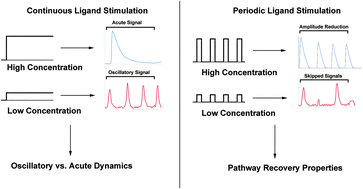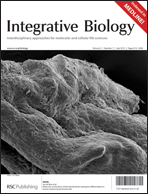Microfluidic interrogation and mathematical modeling of multi-regime calcium signaling dynamics†
Abstract
Through microfluidic interrogation we analyzed real-time calcium responses of HEK293 cells stimulated with short pulses of the M3 muscarinic receptor


 Please wait while we load your content...
Please wait while we load your content...